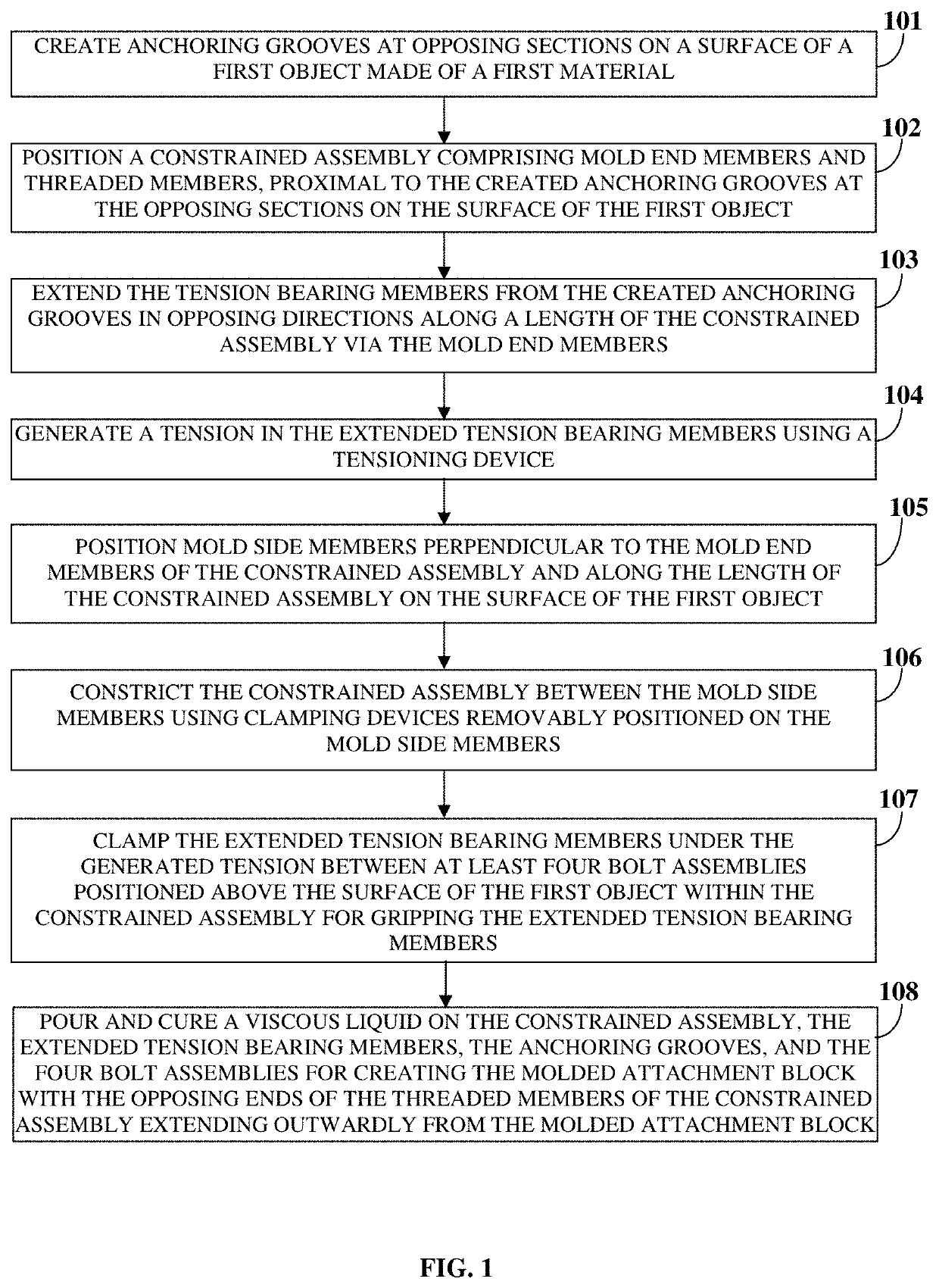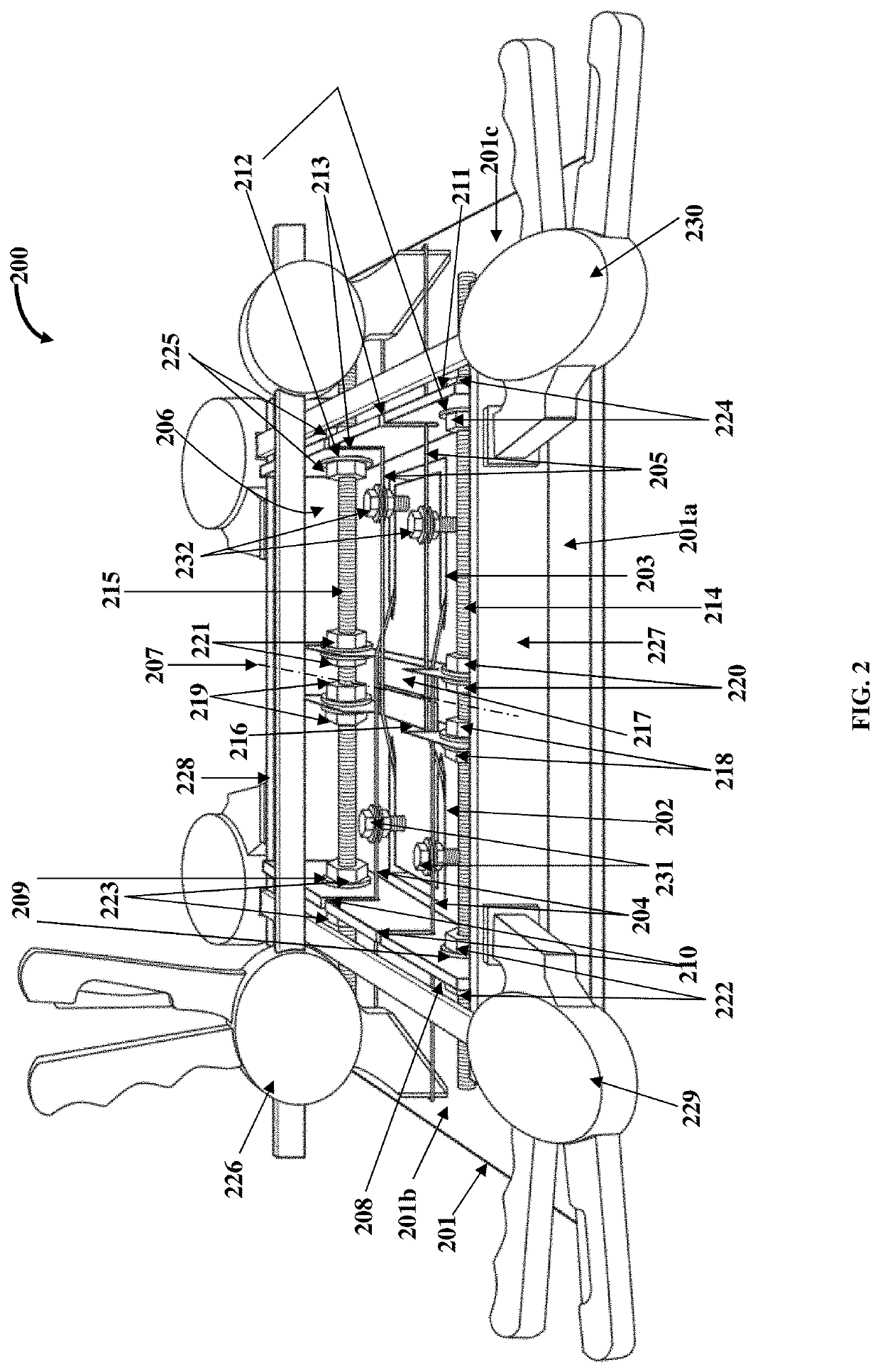Attaching objects made of dissimilar materials using a molded attachment block
a technology of dissimilar materials and attachment blocks, which is applied in the direction of manufacturing tools, metal working apparatuses, forms/shuttering/falseworks, etc., can solve the problems of damage to the tile assembly, affecting the aesthetic appearance of the tile assembly, and affecting the strength of the tile assembly
- Summary
- Abstract
- Description
- Claims
- Application Information
AI Technical Summary
Benefits of technology
Problems solved by technology
Method used
Image
Examples
Embodiment Construction
[0027]FIG. 1 illustrates a method for attaching a first object 201 exemplarily illustrated in FIGS. 2-4 and FIGS. 7-18, made of a first material to one or more second objects made of one or more of multiple second materials dissimilar to the first material of the first object 201, without any bonding material, for example, an adhesive, a chemical bonding material, etc., using a molded attachment block 1601 exemplarily illustrated in FIGS. 16A-16B. As used herein, “first object” refers to any tangible article or item, for example, a tile, a block, a pipe, etc., made of a first material that can be attached to another object, that is, a second object made of a second material similar or dissimilar to the first material. The first object 201 is, for example, a flat object, a cylindrical object, or any object having a constant surface geometry. As used herein, “constant surface geometry” refers to a geometry where a surface is constant and uniform and does not have abrupt protrusions th...
PUM
| Property | Measurement | Unit |
|---|---|---|
| vertical angle | aaaaa | aaaaa |
| length | aaaaa | aaaaa |
| tension | aaaaa | aaaaa |
Abstract
Description
Claims
Application Information
 Login to View More
Login to View More - R&D
- Intellectual Property
- Life Sciences
- Materials
- Tech Scout
- Unparalleled Data Quality
- Higher Quality Content
- 60% Fewer Hallucinations
Browse by: Latest US Patents, China's latest patents, Technical Efficacy Thesaurus, Application Domain, Technology Topic, Popular Technical Reports.
© 2025 PatSnap. All rights reserved.Legal|Privacy policy|Modern Slavery Act Transparency Statement|Sitemap|About US| Contact US: help@patsnap.com



